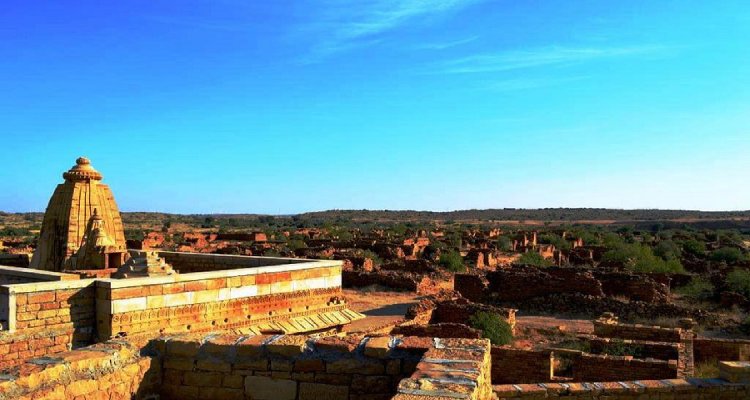The Haunted Legacy of Kuldhara: Rajasthan’s Mysterious Abandoned Village
Unravel the haunting history of Kuldhara, Rajasthan’s deserted village wrapped in legends, ghost stories, and an unsolved mystery that endures through centuries.
The Haunted Legacy of Kuldhara: Rajasthan’s Mysterious Abandoned Village
Introduction: A Ghost Town Frozen in Time
In the golden sands of Rajasthan, just 17 kilometers west of Jaisalmer, lies a village that hasn’t seen a single permanent resident in over 200 years. Kuldhara, once a prosperous settlement, is now a barren, crumbling landscape of ruins. Its silence is not merely that of abandonment, but one shrouded in ghostly legend. Tourists arrive wide-eyed and curious, paranormal enthusiasts whisper of curses, and historians remain intrigued by the enigma that is Kuldhara.
The Rise and Fall of Kuldhara: A Glimpse Into Its Past
Kuldhara was founded in 1291 by the Paliwal Brahmins, a community known for their business acumen and agricultural innovations in the otherwise arid region of Rajasthan. Situated near the city of Jaisalmer, the village thrived for over five centuries. Historical accounts suggest Kuldhara was one of 84 villages inhabited by the Paliwals, forming a robust socio-economic network.
But in the early 19th century, something inexplicable happened.
One night, the people of Kuldhara vanished — every single one of them — leaving behind no signs of struggle or violence. Even more bewildering: 83 other Paliwal villages around Kuldhara were reportedly deserted in the same manner.
So, what drove this mass exodus?
Legend and Lore: A Curse that Echoes Through Time
As per local folklore, Salim Singh, the powerful and cruel prime minister of Jaisalmer, fell for a girl from Kuldhara. He demanded to marry her against her will, threatening dire consequences if the villagers didn’t comply. Facing an ethical and cultural dilemma, the Paliwals chose mass migration over dishonor.
Before they left, legend says, they cast a curse on Kuldhara — that no one would ever be able to inhabit the land again. And so far, it has held true. Multiple attempts to resettle have failed. Structures collapse, animals refuse to live in the area, and visitors often report an eerie sensation.
What Science and Scholars Say
While the ghost stories lend Kuldhara its mystique, researchers and historians offer more grounded explanations. Dr. Rima Hooja, a noted archaeologist, believes that recurring droughts, resource scarcity, and excessive taxation under oppressive rulers might have driven the villagers away.
“There’s no documented evidence of supernatural forces,” Hooja says. “But socio-political pressure, combined with environmental hardship, could explain a strategic retreat.”
Additionally, carbon-dating and archaeological studies suggest the region experienced a sharp decline in groundwater levels, making agriculture unsustainable.
Paranormal Theories and Public Fascination
Despite rational theories, the supernatural aura around Kuldhara continues to captivate. The village is now managed by the Archaeological Survey of India (ASI), and though entry is restricted after sunset, many report hearing whispers, footsteps, or feeling sudden chills during the day.
Paranormal investigators, including international crews, have visited the site. While most come away with inconclusive findings, the consistent pattern of unease and abandonment fuels ongoing intrigue.
Visitors like American traveler Melissa Carter describe the experience as “surreal and haunting — like the village is still watching you.” Local guides, too, avoid walking the ruins alone after dark.
Impacts and Implications: Tourism, Preservation, and Superstition
Today, Kuldhara has transformed into one of Rajasthan’s top heritage attractions. It brings both opportunities and challenges. On one hand, it boosts local tourism and economy. On the other, its haunted narrative often overshadows its rich cultural and historical importance.
Authorities are trying to balance preservation with public interest. Signage has been installed, paths cleared, and a visitor center planned. However, the line between promoting myth and preserving truth remains thin.
Cultural conservationists argue that excessive commercialization based on ghost stories risks eroding the real history of the Paliwals — a community that once turned deserts into fertile plains.
Conclusion: Where Mystery Meets Memory
Kuldhara stands as a haunting symbol of a past that refuses to be forgotten. Whether one sees it as a cursed village or a site of quiet resistance against tyranny, its deserted lanes and fallen walls continue to speak volumes. The mystery surrounding Kuldhara may never be solved entirely — but perhaps, that’s what keeps its story alive.
As Rajasthan continues to evolve, this silent village reminds us that some stories are best preserved in the echo of ruins — not for the thrill, but for the truth they might someday reveal.
Disclaimer:
This article presents a blend of historical facts, folklore, and local beliefs. While legends surrounding Kuldhara are widely circulated, some aspects remain unverified or based on oral traditions.











